Nothing About Us Without Us
Developing Innovative Technologies
For, By and With Disabled Persons
Part Five
INNOVATIVE METHODS AND APPROACHES
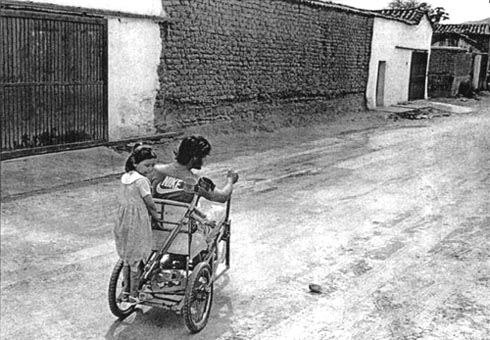
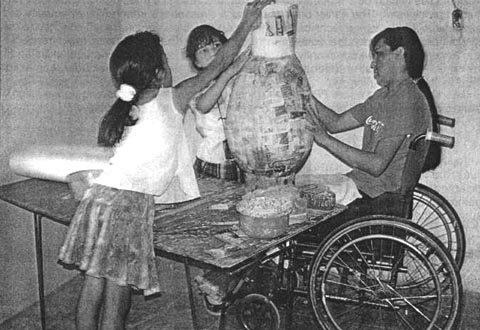
Carmen, who is paraplegic, earns a living making decorative pottery. She covers a big balloon with paper mache (see page 65), then covers that with plaster of Paris designs. Here she teaches two girls at PROJIMO.
Introduction to Part Five
People Helping and Learning
from Each Other as Equals
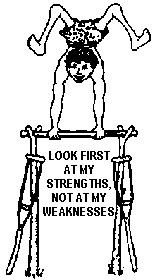
The importance of physical aids and equipment must not be undervalued. They can be essential for some people to meet their full potential. However, many disabled persons feel that the most difficult barriers they face are not physical, but social. Non-disabled people tend to see them as helpless and invalid (not valid). Too often they focus on what disabled persons cannot do rather than on what they can do, on their weaknesses, not their strengths. As a result, many persons with disabilities are denied an equal chance.
To win more equal opportunities will require a community with greater understanding, appreciation, and respect for all people, regardless of differences. This necessitates changes in many people's attitudes and perceptions. In the words of disabled activist Joshua Malinga from Zimbabwe,
"IT IS SOCIETY THAT NEEDS TO BE REHABILITATED."
Soft Technologies. Some important innovations for the enablement of disabled persons are in the realm of "soft" technologies. They include methods, games, and activities for building greater awareness, understanding, and equality with those who are different. They foster a spirit of caring and sharing, of looking at other people's strengths, not their weaknesses.
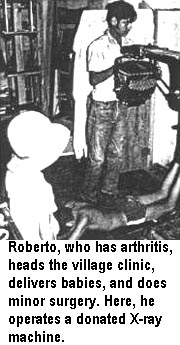
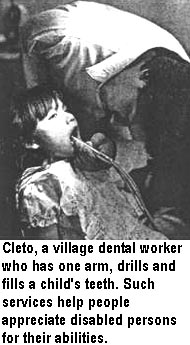
In this part of the book, we look at examples of soft technologies that help to engender appreciation and equality. But in reality, there is no sharp division between "hard" technologies (which deal with things) and "soft" technologies (methods, approaches, and human processes). The earlier parts of the book stressed the importance of equality and partnership in developing technical aids that meet disabled persons' needs on their terms. By contrast, here we see that some of the best ways for disabled persons to win respect and acceptance in the community are through the development of practical skills and by taking action to assist or defend the rights of others. Actions speak louder than words.
In the village of Ajoya where PROJIMO is located, the community's growing appreciation of disabled persons has not primarily been due to awareness-raising campaigns.
Rather, attitudes have changed as people have witnessed, in their daily lives, the skills which disabled people have gained and the crucial services they provide.
The fact that both the disability program and the health program are run mainly by disabled persons, and that the whole community benefits, has done much to change people's views about what disabled people can do.
A Positive Public Image of Disabled Persons in Society
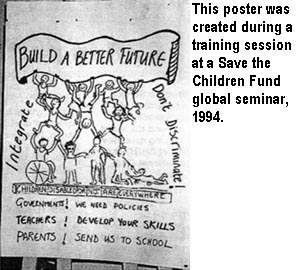
Appropriate technologies take many forms. One important form of soft technology is effective communication. It is important to overcome the image of disabled persons as helpless and tragic persons to be pitied.
Positive images invite positive responses. Where possible, they should show disabled persons who are happy and active, doing worthwhile things with other people, taking initiative, standing up for their rights, and busily getting on with life.Here are a few examples:


For guidelines on effective communication through printed material, see page 340.
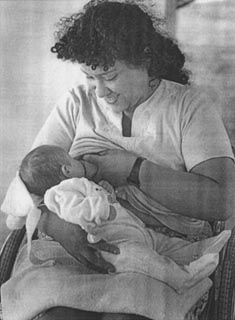
Appropriate Technology for Feeding Babies
When Mari first came to PROJIMO 2 years after the car accident that made her paraplegic, she was sure that her intimate life as a woman had ended. But that changed when she and Armando grew close and then were married. Mari is wonderful with her daughter Lluvia, and knows that to protect her baby's health "Breast is Best." Mari is a splendid role model for other disabled women.
Nothing About Us Without Us
Developing Innovative Technologies
For, By and With Disabled Persons
by David Werner
Published by
HealthWrights
Workgroup for People's Health and Rights
Post Office Box 1344
Palo Alto, CA 94302, USA
